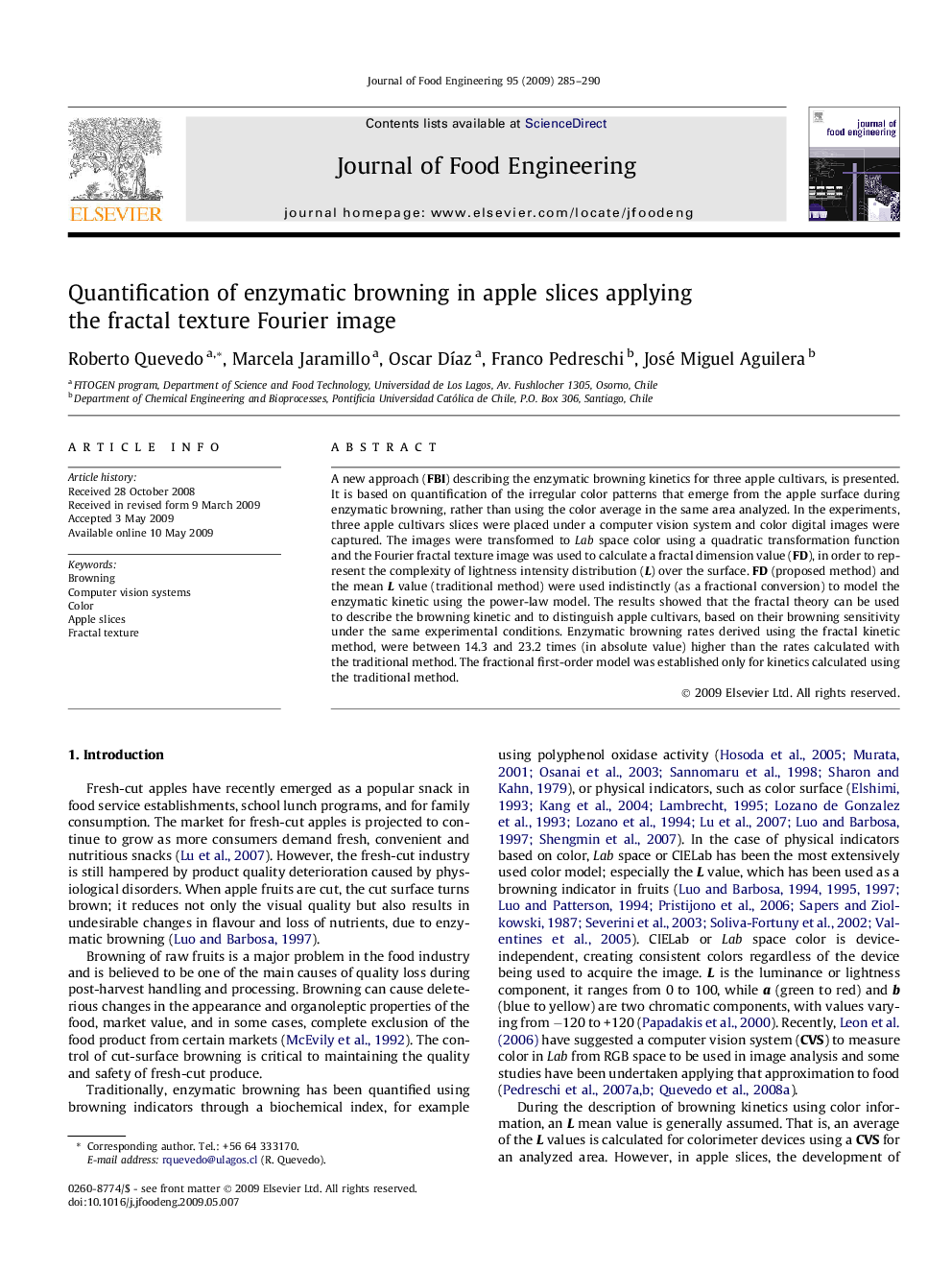| Article ID | Journal | Published Year | Pages | File Type |
|---|---|---|---|---|
| 224469 | Journal of Food Engineering | 2009 | 6 Pages |
A new approach (FBI) describing the enzymatic browning kinetics for three apple cultivars, is presented. It is based on quantification of the irregular color patterns that emerge from the apple surface during enzymatic browning, rather than using the color average in the same area analyzed. In the experiments, three apple cultivars slices were placed under a computer vision system and color digital images were captured. The images were transformed to Lab space color using a quadratic transformation function and the Fourier fractal texture image was used to calculate a fractal dimension value (FD), in order to represent the complexity of lightness intensity distribution (L) over the surface. FD (proposed method) and the mean L value (traditional method) were used indistinctly (as a fractional conversion) to model the enzymatic kinetic using the power-law model. The results showed that the fractal theory can be used to describe the browning kinetic and to distinguish apple cultivars, based on their browning sensitivity under the same experimental conditions. Enzymatic browning rates derived using the fractal kinetic method, were between 14.3 and 23.2 times (in absolute value) higher than the rates calculated with the traditional method. The fractional first-order model was established only for kinetics calculated using the traditional method.
